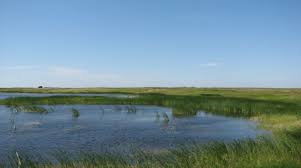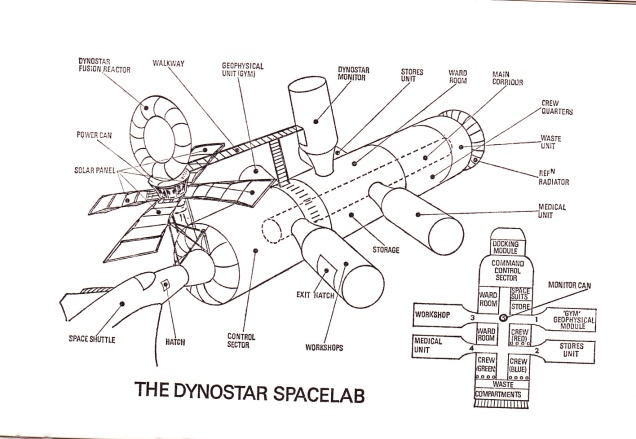 In previous posts I have looked at the science fiction writing of Fred Hoyle in the television dramas A for Andromeda and The Andromeda Breakthrough, as well as his novel, October the First is too Late. Written with his son Geoffrey Hoyle, Fifth Planet echoes the plot of Fred’s earlier novel The Black Cloud (1957) in which a sentient gas cloud entered the solar system and caused glocal catastrophe before moving on. In Fifth Planet a star named Helios, accompanied by its planets, enters the solar system in the late c20th.
In previous posts I have looked at the science fiction writing of Fred Hoyle in the television dramas A for Andromeda and The Andromeda Breakthrough, as well as his novel, October the First is too Late. Written with his son Geoffrey Hoyle, Fifth Planet echoes the plot of Fred’s earlier novel The Black Cloud (1957) in which a sentient gas cloud entered the solar system and caused glocal catastrophe before moving on. In Fifth Planet a star named Helios, accompanied by its planets, enters the solar system in the late c20th.
The central character in the novel is Hugh Conway, a scientist who works at the Helios Centre in the UK which is planning a Western expedition to land on Helios’s fifth planet, Achilles. The Soviet bloc is also planning an expedition. Conway is married to the beautiful Cathy, but after ten years they share no common interests, and she is serially unfaithful, including an affair with one of the astronauts, Mike Fawsett, as Conway knows. Although set in the future, this is clearly the world of the early 1960s with Conway reading The Times over his breakfast.
There then follows a good deal of scientific detail about the difficulties of rendezvousing with a moving object like Achilles and the kind of massive rocket that would be needed to make the journey there and back. This becomes tedious after a while. Finally, and as a reader you are very relieved, both expeditions set off towards Achilles. (By the way the Soviet expedition includes a woman, Tara Ilyana, which was prescient of the Hoyles. They wrote the novel in August 1962: on 16 June 1963 Valentina Tereshkova spent three days orbiting the earth in a Soviet Vostock capsule.)
The Soviet expedition arrives first – but crashes on landing, killing one crewman and injuring another. They are rescued by the Americans after they too have landed. The atmosphere on Achilles is breathable, but there is no sign of any life, the landscape comprising lakes and grass:

Now they knew what the green stuff was. Nothing but grass. Grass that stretched away from them in all directions , over hill over dale. It came up to their calves and it had a nice soft pile. They weren’t botanists so they couldn’t tell whether it was different from the grass back home…Even so it looked pretty much like a clover field. There was a light wind that produced a slight stirring of its surface. They walked a few hundred yards away from the rocket. The sky, they noticed, was very blue, a little richer than on Earth. The wind and the grass were producing a very gentle whispering.
Achilles seems to be an Eden, but turns out to have a serpent as the members of the expedition start to suffer from hallucinations and other mental disturbances. Fawsett thinks he sees Cathy, for instance, and then has a breakdown, while two men drive in circles, unable to escape. Another pair of astronauts come across a set of vertical translucent sheets on a hill:
Now that they had found something both Larson and Bakovsky began to think along the same lines. Theirs was the natural human reaction. What could they do to change things? They didn’t understand it, but perhaps if they could fiddle with something or other, something would happen, and then they would begin to understand it. Fiddle with it first and think about it afterwards. That was the thing to do…
The “fiddling” involves hurling a hand grenade at the sheets, which turns out to be very bad idea indeed. Larson dies on the spot “his whole personality, his very self, was lifted upwards and dissipated like puff of smoke”; Bakovsky runs for half a mile “his face strained with the utmost terror” until he reaches a lake and runs straight in until he vanishes under the water.
Finally the remnants of both expeditions blast off back to Earth, where the Soviets and the West are bemused and then increasingly suspicious as to what reall did happen on Achilles. Cathy is summoned to the bedside of the traumatised Fawsett who dies in her presence. Conway takes her home, already aware that she is no longer his wife but someone else. “..in the first brief moment when she’d looked up at him he’d known – he’d known that it was not Cathy.” An alien has travelled from Achilles in the mind of Fawsett and then transferred to Cathy. She tells Conway she has come to find out about Earth, ” for the same reason that you came to our planet.”
Cathy now has prodigious mental power to influence the minds of humans which she uses to create a worldwide illusion that a nuclear war has started, though humanity eventually divines that it was an illusion;
Conway hadn’t realised how remarkably quick his own recovery had been. It took the rest of the world more than three hours to make the same recovery. The people rose up from the pavement, they came out of the fall-out shelters, they came out of their graves, and they found that the sun was still shining and that their children were still alive. For the most part they broke down and wept as they had not done since they were young themselves. They didn’t know how it had happened but they knew that in some way a hellish disaster had been avoided.
The governments of the world realise that this illusion resembles the illusions experienced on Achilles, and suspicion soon falls on Cathy. In the final, and frankly best part of the novel, with some genuine tension at long last, Cathy and Conway go on the run, hunted by the army and police. Whilst recovering from a bullet wound she tries to explain to him how their planet works:
He was delighted when he realized that the nature of the animating force of life was an irregularity in a wave surface, like a flash of radiation. As it travels in respect of time so our lives are propelled through the electrical circuits in our brain….the wave surface over a short period of time would appear like a standing wave in the four dimensional.
No, I didn’t understand that either. At the end of the novel Cathy uses her mental powers to get them on a shuttle into space and the pair take over a rocket that will get her back to Achilles. Conway is now deeply in love with this new version of Cathy, who has been transformed from a housewife principally interested in shopping and sex to a highly intelligent and powerful woman, and makes a last minute decision:
He looked far down the ship to where Cathy was standing, still watching him. He stood still for a moment and then with a muttered exclamation he began to move towards her again. He stopped for a few seconds to put his arm around her waist and draw her to him, then he went over to the big control panel. Quickly he released the transit, and only then pressed the switches that started the big motors. A very faint trembling seemed to fill the ship, and at last he reached down and pressed the main control lever. In an instant he could feel the drive beginning, he could feel the pressure in his legs. The great rocket began to swing outwards from the Earth, it began the journey for which it had been made, the journey to the planet of the whispering grass.
In their prologue to the novel the Hoyles explain that they wrote the novel to explore some scientific ideas;
 Physics regards the world as four dimensional, all moments of time exist together. The world can be thought of as a map, not only spatially , but also with respect to time. The map stretches away both into the past and into the future. There is no such thing as as “waiting” for the future. It is already there in the map.
Physics regards the world as four dimensional, all moments of time exist together. The world can be thought of as a map, not only spatially , but also with respect to time. The map stretches away both into the past and into the future. There is no such thing as as “waiting” for the future. It is already there in the map.
I think the novel shows up the Hoyles strengths and weaknesses as science fiction writers. The ideas about space and time are intriguing, but the story is often lacklustre and cliched. The characters never really come to life off the page, except perhaps the alien Cathy. The idea of an alien visitor showing humanity that nuclear war would be disastrous seems to be a nod to the film The Day They Earth Stood Still (1951), while the motion of an alien taking over the mind of a returning astronaut seems to be a nod to the The Quatermass Experiment (1953).
Reviews
In Fifth Planet the astronomer and his son bring originality to three familiar themes: the interplanetary space race, the alien world with disturbing novelties, and the symbiotic life-form inhabiting a human being. This last – the human being in question is the hero’s wife – achieves an uncommon pitch of conviction and even pathos. Interspersed are the attacks on politicians as a group and the technocratic bias which one has come to expect from Hoyle pere. There are also references to development in sociology and psychology which will have made these studies scientific, an unscientific notion, although I couldn’t quite make out whether the Hoyles believe it or not. They do seem to think that certain individuals are “basically” interchangeable. This is unscientific.
Kingsley Amis, The Observer, 8 December 1963, p.24
If you would like to comment on this post, you can either comment via the blog or email me, fopsfblog@gmail.

